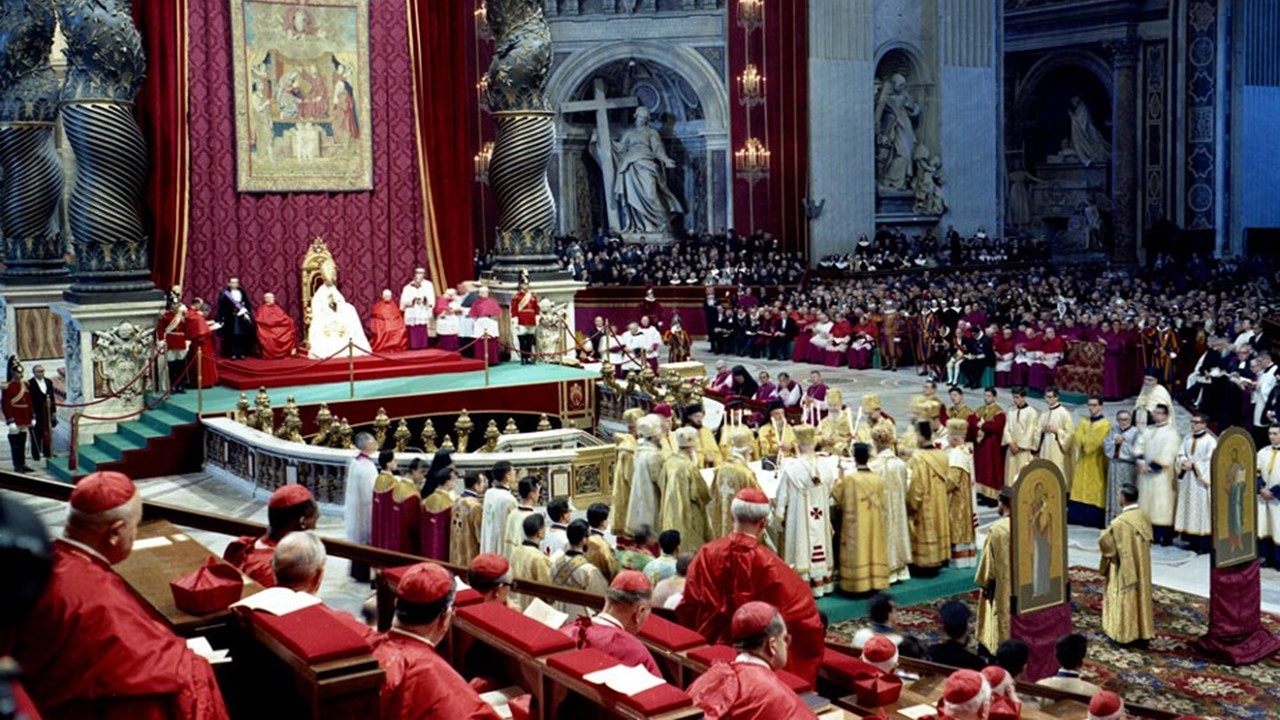“Mother Church rejoices”, these were the opening words of Saint John XXIII, on October 11, 1962, the first day of the Second Vatican Council. Today we celebrate the 60th anniversary of the opening of Second Vatican Council, a historic milestone in the Catholic Church’s transition to the modern era.
When Pope John XXIII announced the creation of the twenty-first ecumenical council of the Catholic Church, the Vatican II, in January 1959, it shocked the world.
The election of Cardinal Giuseppe Roncalli as Pope John XXIII, to some, because of his advanced age, suggested that his would be a transitional pontificate; God's design was however different.

The famous speech 'Gaudet Mater Ecclesiae', indicating the main purpose of the Council by Pope John XXIII, declared that by the singular gift of Divine Providence, the longed-for day has finally dawned when—under the auspices of the virgin Mother of God, whose maternal dignity is commemorated on this feast—the Second Vatican Ecumenical Council is being solemnly opened here beside St. Peter's tomb”.
Pope John XXIII, whose feast day the Church celebrates today, saw the Church open her doors to the world in a process of “updating” (in Italian: "aggiornamento") for the contemporary age.
Nearly 2,500 Catholic cardinals, patriarchs and bishops from all over the world were present for the Council.

Saint John XXIII, seeing that the Church needed to make the message of faith more relevant to people in the twentieth century, called the Council very soon after he was elected.
Closing of Vatican II
‘The Good Pope John’ as he was fondly called, set in motion a 4-year event.
On December 8, 1965, Saint Paul VI, in the courtyard of Saint Peter's Basilica, after having delivered seven messages, (for world leaders, the men of thought and science, the artists, women, workers, the poor the sick and the suffering, young people), closed Vatican II.
The Vatican Documents
Cultural changes in the aftermath of World War II spelled a need to reconsider church practices. The Council did just that, 16 documents in total came out of it, laying a foundation for the church as we know it today.
These documents where to direct the life of the Church in the twentieth century and beyond, which included four constitutions (one liturgical, two dogmatic, and one pastoral), nine decrees and three declarations.

The result of the Council was the renewal of Catholic life in almost every aspect: from the language and theology of the Mass to the Church’s role in the world, even its relationship with other religions.
Vatican II is aptly defined as the Council "of the Church," "of Christ," "of man."
Synod of Bishops, a ‘fruit’ of Second Vatican Council
In a Message for the 60th anniversary of the opening of Vatican II, the General Secretariat for the Synod notes that the Synod itself is a “fruit” of the Council, “and indeed one of its ‘most precious legacies’” (quoting Pope Francis).
The Secretariat’s Message recalls that the Synod’s purpose is “to prolong, in the life and mission of the Church, the spirit of the Second Vatican Council” and “to foster in the People of God the living appropriation of its teaching.”
Although the term synodality does not appear in the conciliar documents, the concept appears throughout the Council, while the three terms “communion, participation, and mission... are eminently conciliar words.”
The Message emphasized the significance of synodality for the Church going forward, recalling that both Benedict XVI and Pope Francis have described synodality as a “constitutive dimension” of the Church, with Pope Francis proclaiming that the path of synodality “is the path that God expects from the Church of the Third Millennium.”
Vatican II – a passage from second to third millennium
The Second Vatican Council laid down the premises of the new walk of the Church in contemporary society. Even being the same as yesterday, the Church lives and realizes in Christ its "today," which took flight especially from Vatican II.
It "prepared the Church for the passage from the second millennium to the third millennium after the birth of Christ".